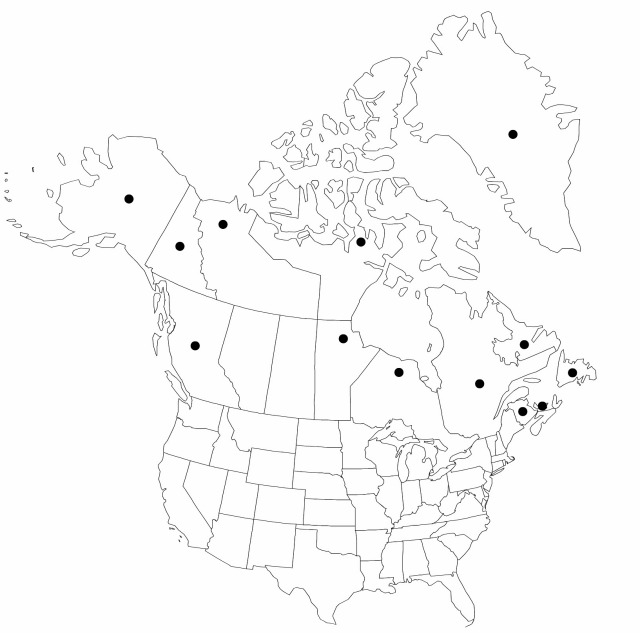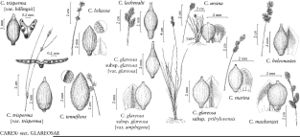Carex glareosa subsp. glareosa
Culms often curved, weak, 10–25 cm. Leaves ± gray-green, often channeled, rarely flat, 1–2 mm wide. Inflorescences 7–25 × 5–12 mm. Pistillate scales 2–3 mm, rarely enveloping perigynia. Perigynia lightly or obscurely several-veined on faces, 1.5–3.5 × 1–1.5 mm.
Phenology: Fruiting Jun–Aug.
Habitat: Salt marshes, gravelly seashores
Elevation: 0–100 m
Distribution

Greenland, B.C., Man., N.B., Nfld. and Labr., N.W.T., Nunavut, Ont., P.E.I., Que., Yukon, Alaska, Europe.
Discussion
G. Halliday and A. O. Chater (1969) recognized two well-defined varieties in the subspecies: var. glareosa and var. amphigena. Variety amphigena, which is the overwhelmingly dominating type in North America, has pale brown to whitish, broadly elliptic-obovate perigynia (1.5–2.5 × 1.3–1.5 mm) contracting abruptly into a minute beak. Variety glareosa often has lanceolate, light brown to whitish, and sometimes distinctly ribbed perigynia more than 2.6 times as long as wide and 2.5–3.5 × 1–1.5 mm in size. According to G. Halliday and A. O. Chater (1969), it is an amphi-Atlantic plant. It occurs in Greenland and a few places in eastern Canada, and it is relatively common in Fennoscandia (Finland and Scandinavia) and northwestern Russia. In many places it grades to the var. amphigena.
Selected References
None.
